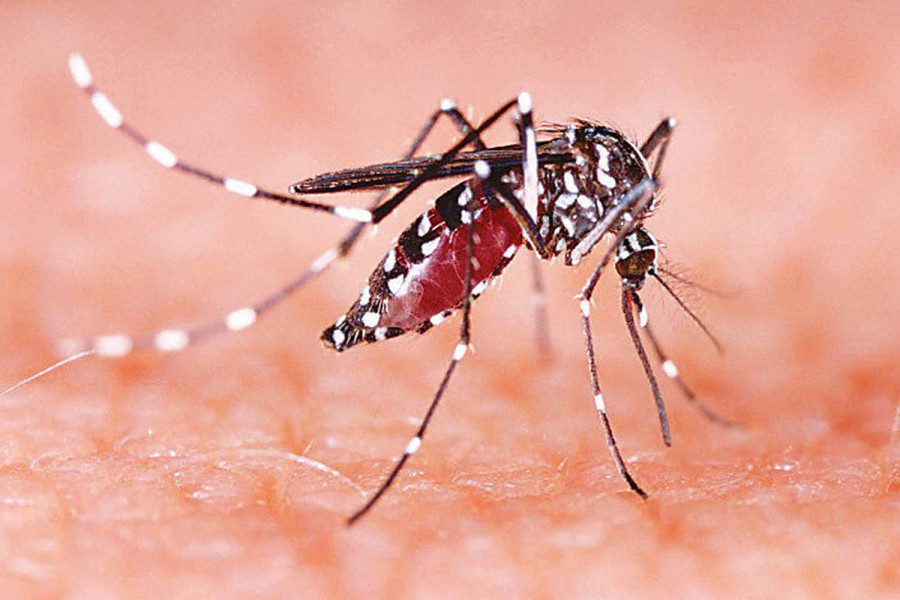Health
Counting cases alone won’t defeat dengue, warn doctors
Over 2,300 cases and one death have been recorded so far this year. Experts call for risk mapping, increased surveillance and actions from local units.
Arjun Poudel
A bi-weekly situation update published by the Epidemiology and Disease Control Division on Monday shows one death from the dengue disease and over 300 positive cases. Since the start of this year, the number of people infected with the virus has reached 2,365.
Public health experts warn that the death toll and case numbers could go up further in the coming days. They criticise the authorities for their narrow approach—focussing solely on counting cases and deaths, which does little to control the outbreak of the deadly disease.
“The authorities have neither conducted risk mapping nor taken measures to lessen the spread of the deadly virus,” said Dr Baburam Marasini, former director at the Epidemiology and Disease Control Division. “Counting cases and deaths is not enough. Even the reported figures are far from reflecting the actual scale of the outbreak.”
Dengue is a mosquito-borne viral disease transmitted by female Aedes aegypti and Aedes albopictus mosquitoes. The same vector also transmits chikungunya, yellow fever, and Zika, according to the World Health Organisation.
“Dengue virus is not like the coronavirus, which spread all over the world suddenly,” said Dr Biraj Karmacharya, an infectious disease expert who is also the administrative head of Dhulikhel Hospital.
“We can use the existing data for risk mapping, step up surveillance, and predict disease outbreaks accordingly.”
Experts say the disease will not stop spreading unless the lessons and experiences gained in previous outbreaks are implemented. They say the real number of infections could be several times higher, as the government’s case reporting system is not very effective, and more than 80 percent of the cases are asymptomatic.
Even symptomatic patients do not seek treatment at the hospital unless their symptoms get severe. What concerns them much is that many patients take non-steroidal anti-inflammatory drugs—Flexon tablets, Nims, and Rynex, among others—to cure body aches caused by the dengue infection. Using such drugs is very risky during dengue infection.
Doctors warn that using non-steroidal anti-inflammatory drugs (NSAIDs) to treat dengue can increase the risk of internal bleeding, including in the eyes, elevate enzyme levels and damage the liver.
Some patients who use NSAIDs in excess also suffer internal bleeding. Such patients need to transfuse platelet-rich plasma and platelet concentrate, according to them.
Health agencies concerned have been shifting responsibilities to other agencies that are ill-equipped and lacking in both financial and human resources.
“Every day, 16 to 17 people in our district get infected with the dengue virus,” said Dr Arjun Sapkota, chief of the Health Office, Kathmandu. Health agencies at the local level have been asked to launch a dengue search and destroy campaign and ramp up awareness about the risks.”
Experts say most local units lack the budget and human resources to launch preventive measures. They say that a massive awareness campaign is instrumental in destroying the breeding ground of the dengue-spreading vector, and the public must be made aware of the treatment.
Many people infected with dengue show mild symptoms, which do not need any treatment or can be treated with paracetamol at home.
Dengue-transmitting mosquitoes breed in clean water and bite people in daylight. Uncovered water tanks and discarded objects such as plastic cups and bottles could be breeding grounds for dengue-carrying mosquitoes.
According to doctors, mild to high fever, severe muscle pain, rashes, severe headache and pain in the eyes are some of the symptoms of dengue. Doctors advise that those with these symptoms should seek immediate treatment. While there is no specific cure for the disease, early detection and access to proper medical care can lower fatalities.
Nepal reported its first dengue case in a foreigner in 2004 in the Chitwan district. Since then, an increasing number of dengue infections, including major outbreaks, have been reported from many districts.
At least 20 persons died, and more than 52,000 were infected by the virus, which had spread to all 77 districts in 2023.
In 2022, a total of 88 people died, and over 54,000 were infected by the virus across the country. During that period, hospitals in the Kathmandu Valley were overwhelmed with dengue patients, and pharmacies ran out of paracetamol, the most widely used medicine to treat fever.
In 2019, the disease killed at least six people and more than 16,000 were hospitalised across the country. The virus had spread to 68 districts at the time.
Though the post-monsoon period is considered the dengue epidemic season, the deadly disease has already become endemic in Nepal, as outbreaks are reported every month, including in the winter months.




 7.12°C Kathmandu
7.12°C Kathmandu














